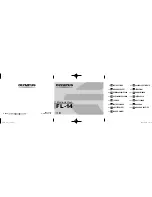THE DEFINITION OF TERMS
White Balance
Compensates for deviations in the white color caused by changes in the color
temperature of the light source so that the colors are reproduced correctly.
Exposure
Adjusts the images to the optimum brightness.
Flicker (FLC)
Avoids image flicker when there is a discrepancy between current and
frequency
AGC (Automatic Gain Control)
Automatically adjusts (boosts) the video signal to the required level to produce
a quality image in low light situations
Sens-Up (Slow Shutter)
Allows the video sensor of a camera to control sensitivity as it automatically
detects the light level in dark environments to maintain a clear picture.
Back Light Compensation (BLC)
Compensates for the brightness of the subjects with a large amount of
background light that would make it practically impossible to see any details of
the subjects. Adjusts the iris so that a distinctive subject and the background
are delivered at the same time.
Wide Dynamic Range (WDR)
Extends the action of BLC. When both high-brightness subjects and low-
brightness subjects are in the same scene, overexposure in the high-brightness
subjects or loss of dark detail in the low-brightness subjects may occur. WDR
combines the two images to eliminate over exposure and loss of detail.
Motion
Use to detect motion within the scene using one of the available methods.
Some methods trigger the Alarm output.
Sharpness
Reducing this parameter adjusts the noise level to smooth out the "noise"
caused by the compression.
Caution should be taken not to reduce it too much, which may result in a
blurred image.
11


















